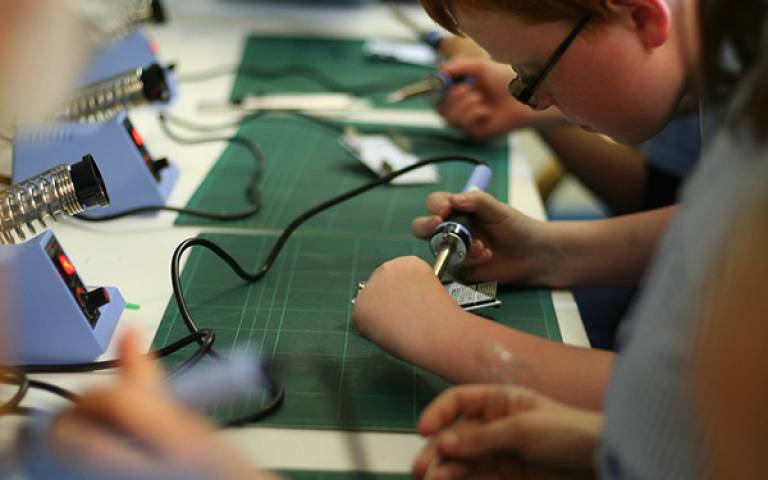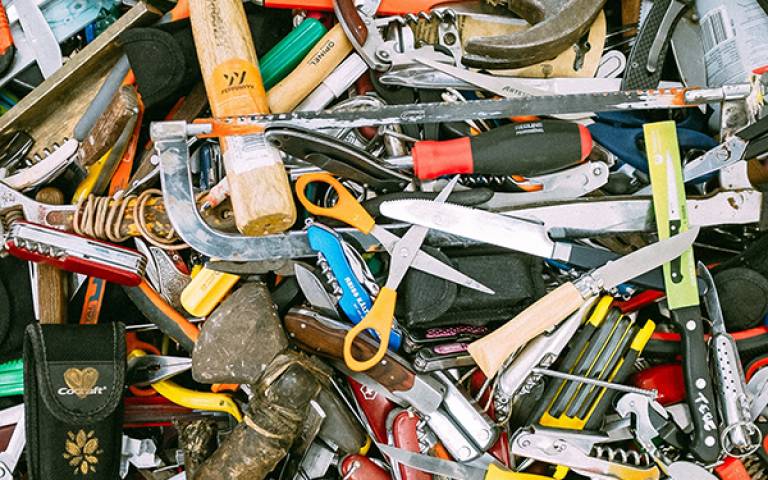How can I repair my remote-control buttons that aren’t working?
If you're willing and able, all you need are the right instructions, tools, and a little elbow grease to fix your remote control - one day you might even be able to fix the entire TV!

23 August 2021
If you have buttons that are not working, then why not open up the enclosure and try to fix them - you have nothing to lose! There are several reasons why you might want to try and fix something that is not working, maybe to save some money, save the planet or just out of the curiosity of finding out how things work. Whatever your motivation, the first step is to open it up, which may be easier said than done.
About 15 years ago Make Magazine (https://makezine.com) published the Maker’s Bill of Rights ”(https://cdn.makezine.com/make/MAKERS_RIGHTS.pdf) with the strapline “If you can’t open it, you don’t own it. With the goal of promoting the ability for customers to fix things, it advocates for cases being easy to open, the use of standard tools, and replaceable parts. Your remote control is a fantastic example of a common product - there are probably millions of them in homes around the world. It should be easy to repair, and ideally also possible to reuse with a different product.
To get started you could do a quick internet search for “repair remote control buttons”, which will probably return millions of results. We quite like the advice on sites like Instructables (https://www.instructables.com/Fixing-Non-Working-Buttons-of-Any-Remote-C...) which offers a great place to start to debug what might be going wrong, from poor conductivity of the switches to broken connections, which might be repairable using some electric paint from Bare Conductive (https://www.bareconductive.com/blogs/resources/how-to-repair-a-remote-co...). Sites like IFIXIT (https://www.ifixit.com/Device/Remote_Control ) are known for community contributions to fixing all sorts of electronic equipment, including many makes of remote control. You could even hack your own general purpose remote control suggested in a previous article on “How remote controls work” (link to past article on ask an expert)

If breaking out your toolbox and taking things apart feels a little daunting, then why not find someone to help you take those first steps? The excellent Restart Project (https://therestartproject.org/ ), founded in 2013, has been working with schools and local community groups to hold Restart Parties (https://therestartproject.org/about/ ) where, “people teach each other how to repair their broken and slow devices”. It has volunteers in over 150 groups in 20 countries around the world, and brings people together to share the skills required to build the confidence to repair broken stuff. Whilst these parties give people a hands on way to make a difference, Restart are also campaigning for the “Right to Repair” (https://therestartproject.org/right-to-repair/ ) and were co-founders of the “European Right to Repair” (https://repair.eu ) campaign.
So why is the ability to repair important? Products have become increasingly sophisticated over the past couple of decades whilst also becoming more consumable as prices have been driven down. This has led to companies developing strategies of “planned obsolescence” (https://en.wikipedia.org/wiki/Planned_obsolescence ) where consumers expect to only use a product for a short period of time (e.g. a new phone every 2 years), since it is often cheaper or more convenient to replace a product rather than fix it. But this disposable culture is a problem for society and a significant contributor to our current climate crisis. Electronic waste generated in 2019 reported by statista.com (https://www.statista.com/statistics/1067081/generation-electronic-waste-... ) was 54 million metric tons, with only 20% of that being recycled - the rest is going into landfill. The UK is the second worst performer when it comes to e-waste per capita, with an average of 25kg per person per year, compared to a global average of 7kg.
This culture of disposability is not sustainable in its current form. The right to repair is fundamental to extending the life cycle of products and moving towards a circular economy. Take a look around your room. What is the oldest product you use on a day to day basis? Is it five years old? Ten? Twenty? Can you imagine your remote control in 25 years time, still going strong with all the fixes you have made to it?
 Close
Close



